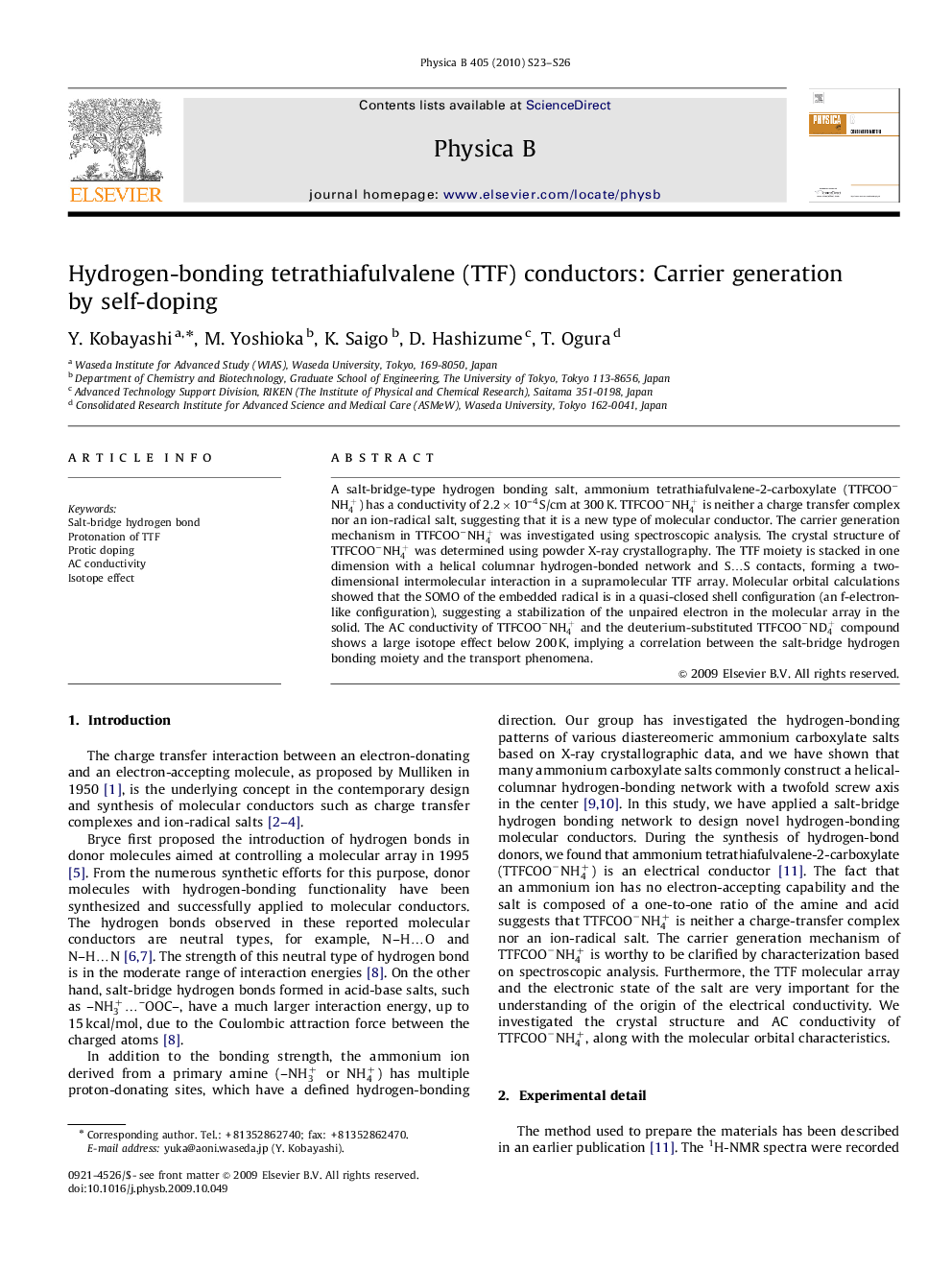| Article ID | Journal | Published Year | Pages | File Type |
|---|---|---|---|---|
| 1811773 | Physica B: Condensed Matter | 2010 | 4 Pages |
A salt-bridge-type hydrogen bonding salt, ammonium tetrathiafulvalene-2-carboxylate (TTFCOO–NH4+) has a conductivity of 2.2×10–4 S/cm at 300 K. TTFCOO–NH4+ is neither a charge transfer complex nor an ion-radical salt, suggesting that it is a new type of molecular conductor. The carrier generation mechanism in TTFCOO–NH4+ was investigated using spectroscopic analysis. The crystal structure of TTFCOO–NH4+ was determined using powder X-ray crystallography. The TTF moiety is stacked in one dimension with a helical columnar hydrogen-bonded network and S…S contacts, forming a two-dimensional intermolecular interaction in a supramolecular TTF array. Molecular orbital calculations showed that the SOMO of the embedded radical is in a quasi-closed shell configuration (an f-electron-like configuration), suggesting a stabilization of the unpaired electron in the molecular array in the solid. The AC conductivity of TTFCOO–NH4+ and the deuterium-substituted TTFCOO–ND4+ compound shows a large isotope effect below 200 K, implying a correlation between the salt-bridge hydrogen bonding moiety and the transport phenomena.
